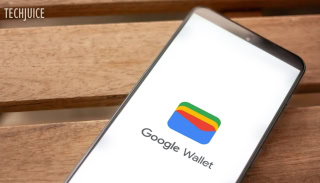Apple Inc. is set to give its watch lineup one of the biggest software updates since the original version with a new focus on widgets and fundamental changes to how the device works. Apple is working on its most significant software overhaul to watchOS in recent memory.
According to Bloomberg’s Mark Gurman, the company is redesigning the Apple Watch’s user interface to make widgets a “central part” of how you will interact with the wearable. In describing the new UI, Gurman says it brings back elements of the Glances system that was part of the original watchOS while borrowing the “style” of widgets Apple introduced alongside iOS 14 last year.
https://t.co/2UFGI17khP https://t.co/uCw0TO072w pic.twitter.com/RTSyWLCirl
— Mark Gurman (@markgurman) April 30, 2023
He adds the new interface will be “reminiscent” of the Siri watch face that the company introduced with watchOS 4 in 2017 but will function as an overlay for whatever watch face you wish to use.
“It’s also similar to widget stacks,”
Gurman adds, referencing the iOS feature that allows you to scroll through widgets you’ve placed on top of one another.
Simultaneously, Apple is reportedly testing a tweak to the Apple Watch’s physical buttons. With the interface redesign, pressing down on the digital crown could launch the operating system’s new widgets view instead of taking you to the home screen like the dial currently does with watchOS 9.
The new widgets system on the Apple Watch will be a combination of the old watchOS Glances system and the style of widgets that were introduced in iOS 14 on the iPhone. The plan is to let users scroll through a series of different widgets — for activity tracking, weather, stock tickers, calendar appointments, and more — rather than having them launch apps.
The new interface will be reminiscent of the Siri watch face (shown above) introduced in watchOS 4, but it will be available as an overlay for any watch face. It’s also similar to widget stacks, a feature in iOS and iPadOS that lets users pile many widgets into one and scroll through them.
When the company launched the original Apple Watch in 2015, watchOS was built around four main areas: the watch faces, a widgets interface called Glances, the home screen filled with app icons, and an area to access frequent contacts. Within a few years, Apple adjusted the strategy, ditching widgets and frequent contacts in favor of highlighting notifications and multitasking capabilities.
With the likelihood that the redesign will be jarring for some, Gurman speculates Apple plans to make the new interface optional first. Additionally, he suggests the overhaul is an admission that an iPhone-like app experience “doesn’t always make sense on a watch – a place where you want as much information as possible with the least amount of poking around.”
With WWDC 2023 a little more than a month away, it won’t be long before Apple shares more information about what Watch users can expect from its wearable’s next big software update.
The company has warned investors to keep expectations in check for its fiscal second quarter, which ran through the end of March. Apple had said it anticipates a sales decline roughly equivalent to the December period when revenue dropped about 5%. The iPad and Mac are expected to see especially steep decreases, while the iPhone may improve somewhat — helped by the resolution of supply chain snags. In terms of new products, Apple launched a tweaked HomePod as well as MacBook Pro and Mac mini refreshes during the quarter.
Read More:













